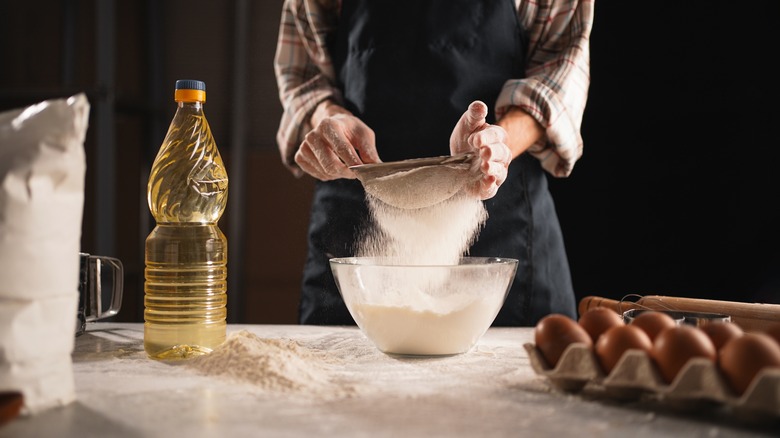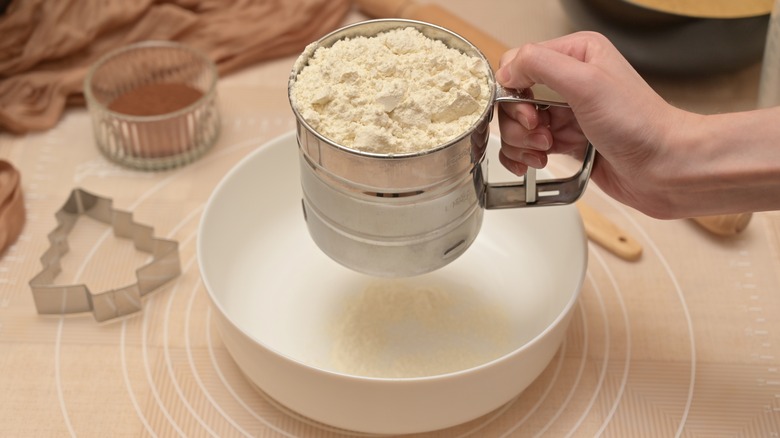Is Sifting Your Flour Really That Important?
We may receive a commission on purchases made from links.
A pillar in both baking and cooking, flour is an age-old essential ingredient for perfecting sauces, cakes, cookies, quiches, pasta, and so much more. Introducing flour into a scratch-made meal is easy — simply measure the necessary portion and combine it with your recipe's remaining ingredients. No prep work needed, right? In most cases, flour doesn't require much tending to, but occasionally a recipe necessitates sifting, and it's not a step worth skipping.
Sifting is a cooking technique used to aerate dry ingredients, remove clumps, and ensure a uniform texture by passing them through a tool. Before the rise of industrial food production and regulated quality standards, flour often contained contaminants and impurities like seeds, husks, and even bugs, making sifting a routine kitchen practice regardless of the recipe. Commercially-sold flour is well-refined and shouldn't include miscellaneous debris, but that doesn't mean you should omit sifting if a recipe calls for it. Sifting flour is essential when cooking or baking dishes that require a smooth, even consistency, such as dessert batters and gravy. Dense, unsifted flour can cause lumps, uneven texture, or inconsistent cooking, leading to less-than-desirable results in your final dish. It's a mistake that can leave you with disappointing gravy. Plus, sifting also aerates flour, which makes it lighter and easier to incorporate into doughs, batters, and any other recipes.
If you've made flour from scratch by finely grinding grains down to a powder at home, sifting becomes especially important, as the flour hasn't gone through commercial processing. Always double-check your recipe instructions for sifting requirements, and consider doing it as a precautionary step in dishes where a smooth texture is of the essence.
Best ways to sift flour
In the kitchen, minimizing work and maximizing quality is the key to achieving great results with less effort. Although sifting flour can add an extra step to your favorite recipes, it's an easy process that doesn't require skill or practice.
The easiest way to sift flour is through a traditional flour sifter – a hand-held device with a fine mesh screen operated by a squeeze handle or crank that aerates dry ingredients. It's an essential baking tool everyone should own. If you don't happen to have one, luckily there are plenty of accessible alternative methods for flour sifting. Pour flour into a fine mesh strainer or sieve and tap its edges to pass the flour through and leave any clumps behind. For an even easier option, use a whisk or a fork to gently aerate and break up flour. Make sure to pick the right whisk and use it properly, though.
If you didn't sift flour into your recipe and wound up with a lumpy texture, consider pulsing the batter or sauce in a food processor or blender to make it smoother. Although sifting isn't always the most important step in baking or cooking with flour, it's a necessary step when a recipe calls for it and can certainly come in handy from time to time.

